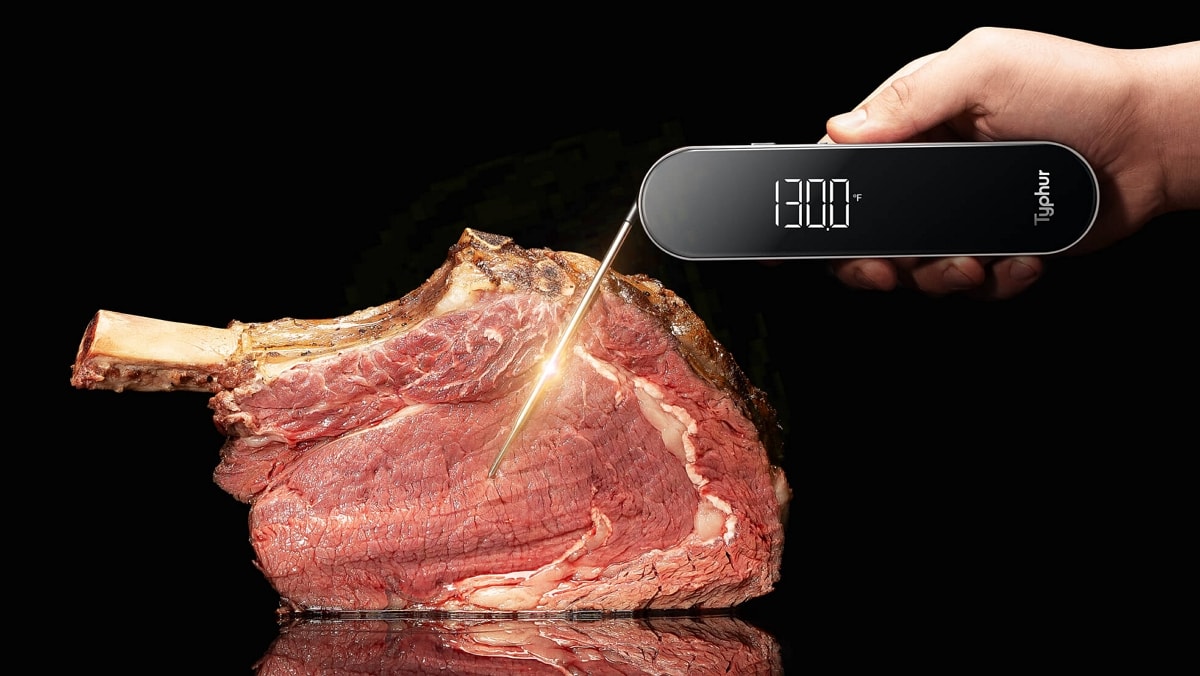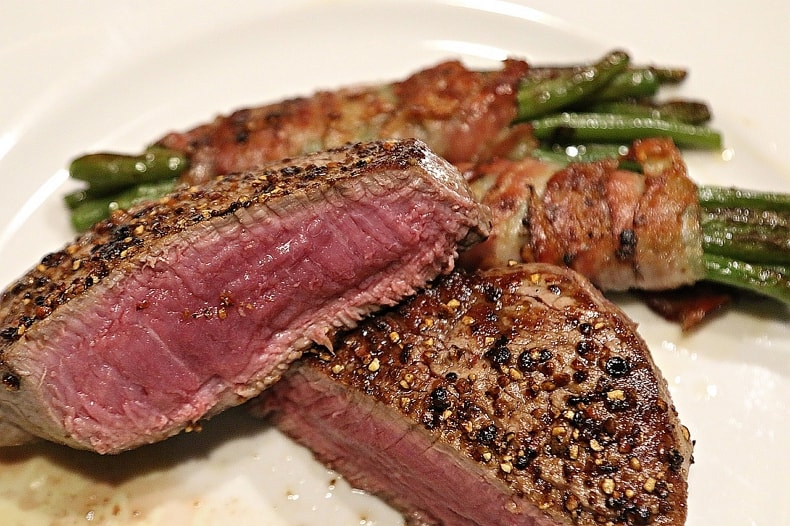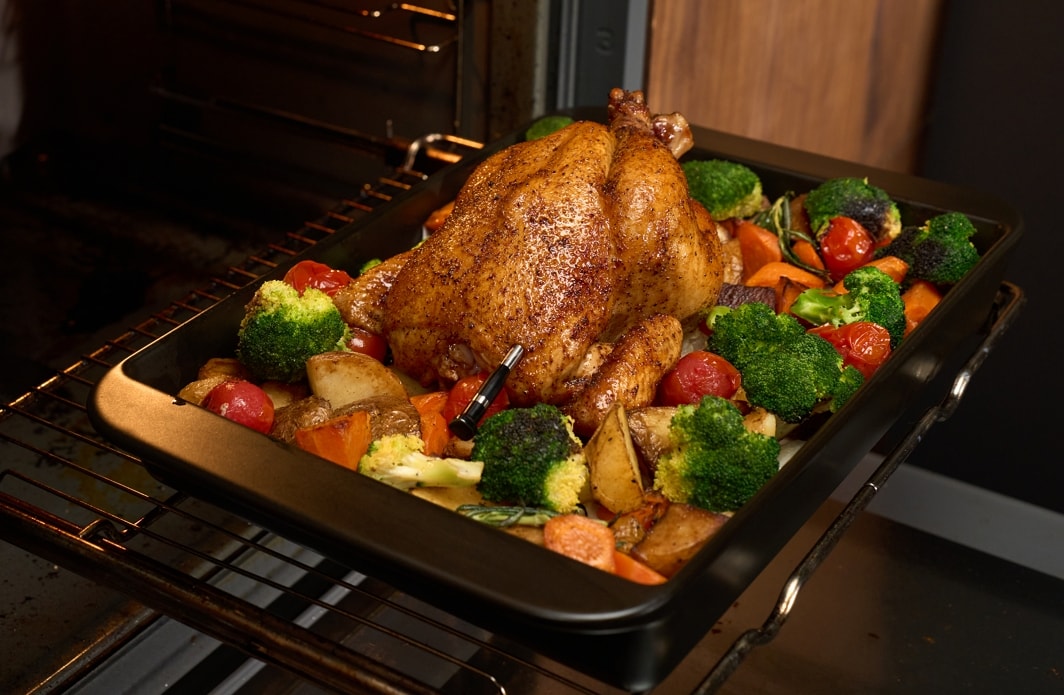I see many people talking about the internal temperature of salmon:
- ‘What Is the best salmon internal temp?’
- ‘What’s the ideal temperature of cooked salmon?’
- ‘Is salmon done at 145 degrees?’
- ‘What temp should you eat salmon at?’
These questions show significant uncertainty among people regarding the best internal temp of salmon. If you’re one of them, please continue reading.
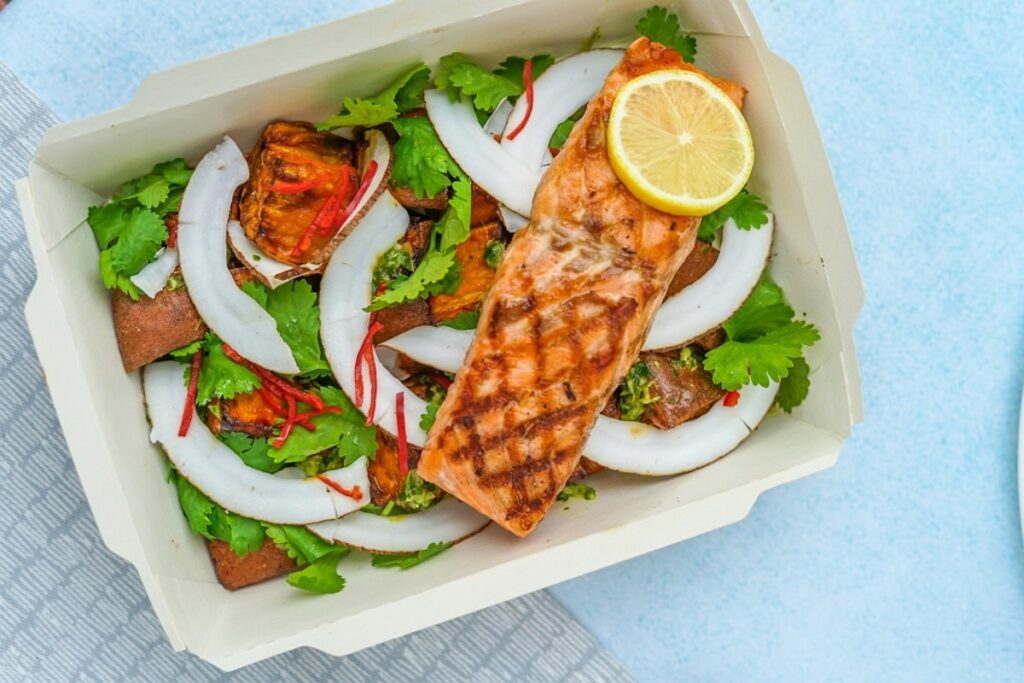
Salmon, one of the richest and most flavorful fish, can unfortunately become dry, tough, and unpalatable if overcooked. However, reaching an ideal salmon internal temp is a culinary delight: tender, flaky, and moist.
According to USDA, the minimum salmon internal temp needs to be 145°F. At the same time, many argue that this temperature can compromise the salmon’s quality, leading to overcooked, dry, and less flavorful results.
So, what’s the best internal temp of cooked salmon and safe to eat? Let’s explore further.
JUMP TO:
Where does the number 145°F come from when cooking salmon?
The recommended temperature of 145°F for salmon by the USDA is primarily based on food safety considerations, particularly in regard to the immediate elimination of Listeria bacteria. However, it’s important to note that food safety isn’t solely dependent on a specific temperature threshold; it also involves the combination of temperature and time.
As J. Kenji Lopez-Alt highlights in his book, “Food Lab“, food safety is a complex interplay of factors. Salmon cooked to a slightly lower temperature can still be safe to eat if it is held at that temperature for a sufficient duration, as most cooked foods are. This approach not only ensures safety but also allows for a wider range of desired textures and flavors to be achieved, catering to individual preferences.
In essence, while 145°F is a recommended guideline for safety, it’s worth considering the overall cooking process and how time at temperature can influence the final outcome in terms of taste and texture.
Best internal temp of salmon
If you have cooked salmon at 145°F, you will get a salmon extremely tough to bite into and often removes much of the flavor. Because it overcooked.
Instead, we recommend cooking your salmon when its internal temperature reaches 120°F to 125°F. Is this not dangerous? So long as the salmon is cooked for the correct length, it will still kill off the damaging and dangerous microorganisms we are discussing. Please note that cooking salmon at a lower temperature should ONLY be done with higher quality salmon, i.e., sushi-grade salmon.
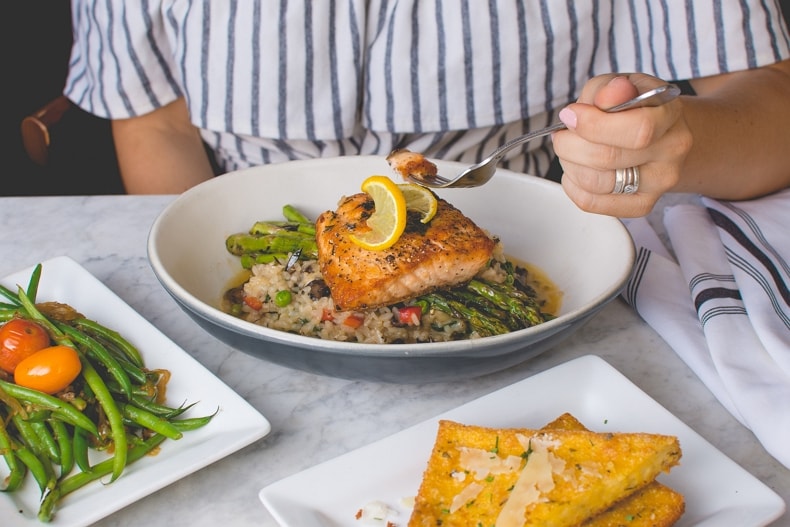
Salmon doneness chart
Like steak meat, you can eat salmon at a different level of doneness. The challenge, of course, is finding out what kind of rareness you appreciate most. To help you determine this, we recommend following this quick guide to salmon ‘doneness’ – remember to check the internal temperature of salmon when cooking.
| SALMON RARENESS | DONENESS | SALMON TEMPERATURE (°F) | SALMON TEMPERATURE (°C) |
| Rare salmon | Rare salmon is extremely soft to the touch, and it is not recommended to cook occasional salmon due to potential health risks; only for those with experience. | 110-115°F | 43-46°C |
| Medium-Rare salmon | This is a popular choice and is typically soft and moist to eat while providing that opaque look instead of a translucent pattern like the one above. | 115-120°F | 46-48°C |
| Medium salmon | Medium salmon is ideal for most people and will provide that pinkish salmon color in the center. Should be allowed to rest for 3-5 minutes after cooking. | 120-125°F | 48-51°C |
| Medium-Well salmon | For many, medium-well salmon is a popular choice as it can be a touch firmer on the flesh but also light and pink in the middle section. | 125-140°F | 51-60°C |
| Well-Done salmon | This will remove all pink coloring from the salmon and comfortably provide the firmest type of salmon. Ideal for those looking to reduce risk when cooking, too. | 140-145°F | 60-65°C |
How to tell if the salmon is done?
You may find some tips on how to tell when salmon is done, but the safest way to ensure your salmon is cooked is it has reached the correct internal temperature.
You can do this with any typical meat thermometer. Our advice, though? Use an Instant Read Thermometer: Typhur InstaProbe. This particular probe offers a 0.5s reading speed and ±0.5℉ accuracy, which is the best way to determine the internal temperature of salmon.
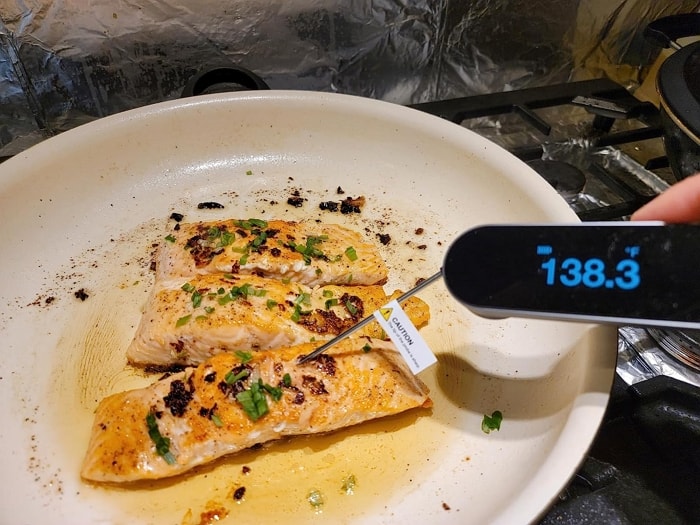
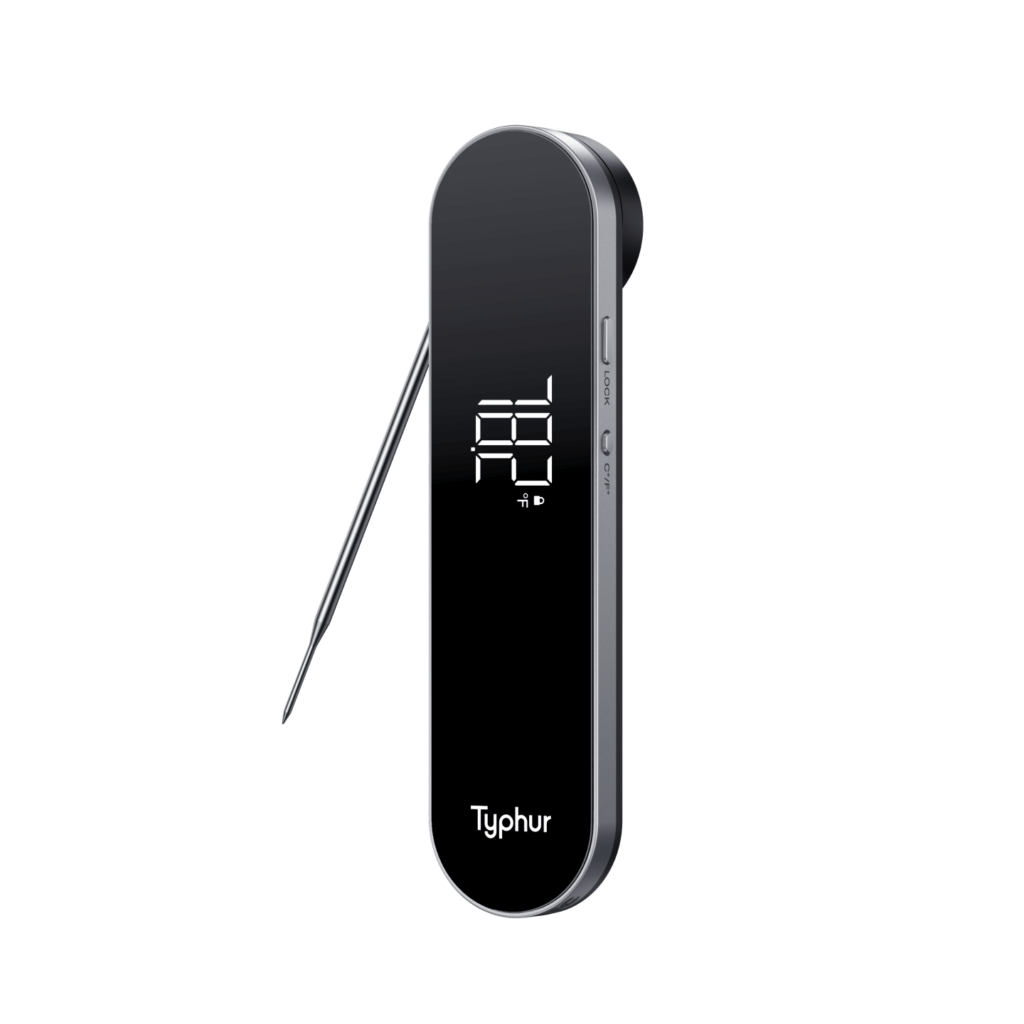
Instant Read Meat Thermometer
Tips to avoid overcooking salmon
Now that you feel more confident in the process of cooking salmon, we recommend that you also take the following tips and advice into consideration:
- Be aware of overcooking. Salmon can go from undercooked to overcooked in a matter of seconds. Ensure you do not leave your salmon to cook unattended; keep a close eye on it.
- Color is your guide. While you should not cook fish based purely on the color, you can tell with salmon as it goes from a translucent color to a more opaque shade.
- Always use a thermometer. The InstaProbe meat thermometer we recommend ensures you can find the salmon’s internal temp easily and accurately, maximizing the quality of your cooking.
- Balance time and temperature. As noted above, you must find the right blend between temperature and time. Go for a longer time and a lower temperature to feel safe.
- Never forget to rest your fish. Lastly, ensure you ALWAYS give your salmon time to rest after cooking. 3 to 5 minutes of relaxing time will help maximize the moisture of the salmon.
- Note your results for perfection. Once you have found the salmon texture and style you are happiest with, note the temperature and cooking time to replicate this same result repeatedly.
Remember the above tips, and you should soon find it much easier to start cooking salmon. At first, it can feel daunting due to the importance of finding the right temperature. By using the salmon cook temp guide above, though, and following the times listed, you should have no problem repeatedly getting your salmon cooked close to perfection!
Our favorite salmon recipes
Cooking salmon tonight? Get Inspired with salmon recipe ideas!
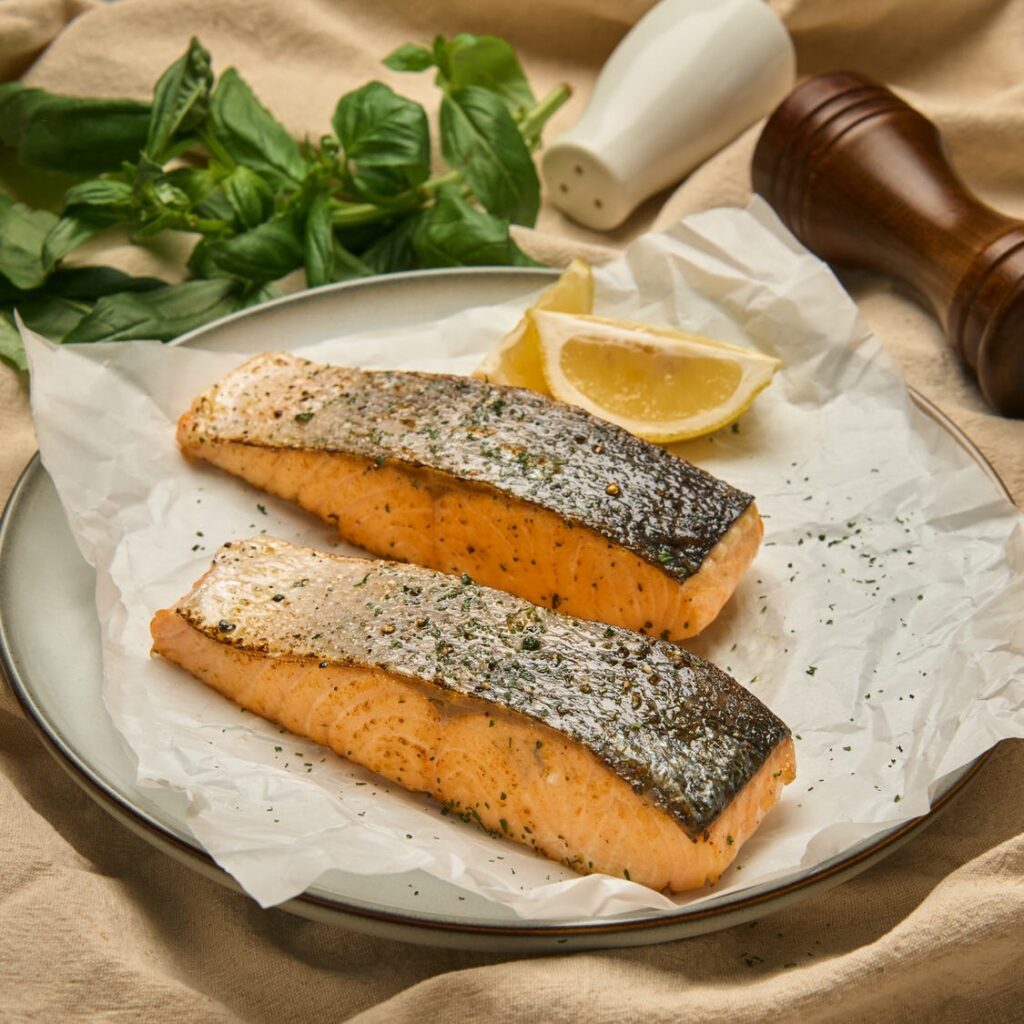
Air Fryer Salmon
The quick and easy way to cook salmon. It provides a healthier alternative to pan-frying without sacrificing the crispiness and flavor. This method ensures you get a perfectly cooked, moist, and flaky salmon fillet every time, with minimal effort.
Get the air fryer salmon recipe
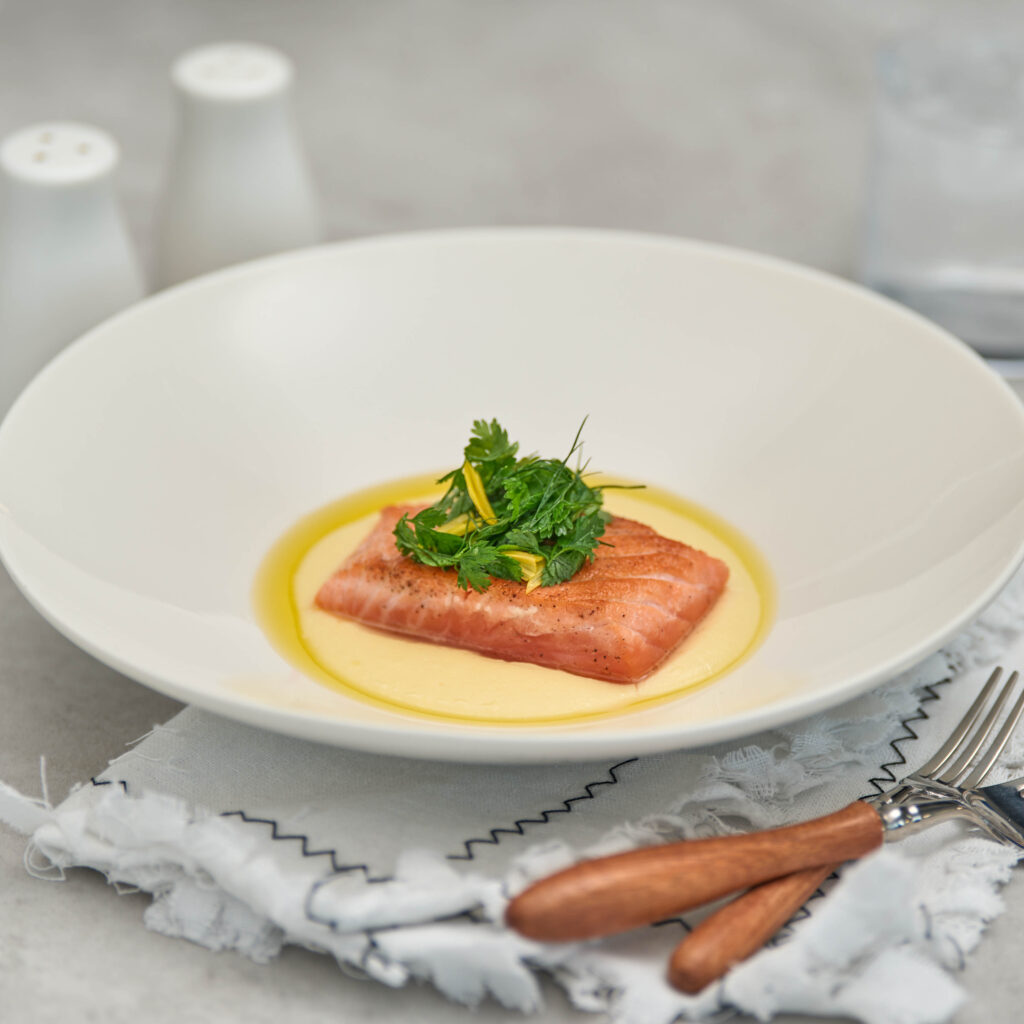
Sous Vide Salmon
Sous vide cooking is a fantastic way to prepare salmon, ensuring that every bite is impeccably tender and bursting with flavor. This method allows for precise temperature control, meaning you can achieve the exact level of doneness you desire without the risk of overcooking.
Get the sous vide salmon recipe
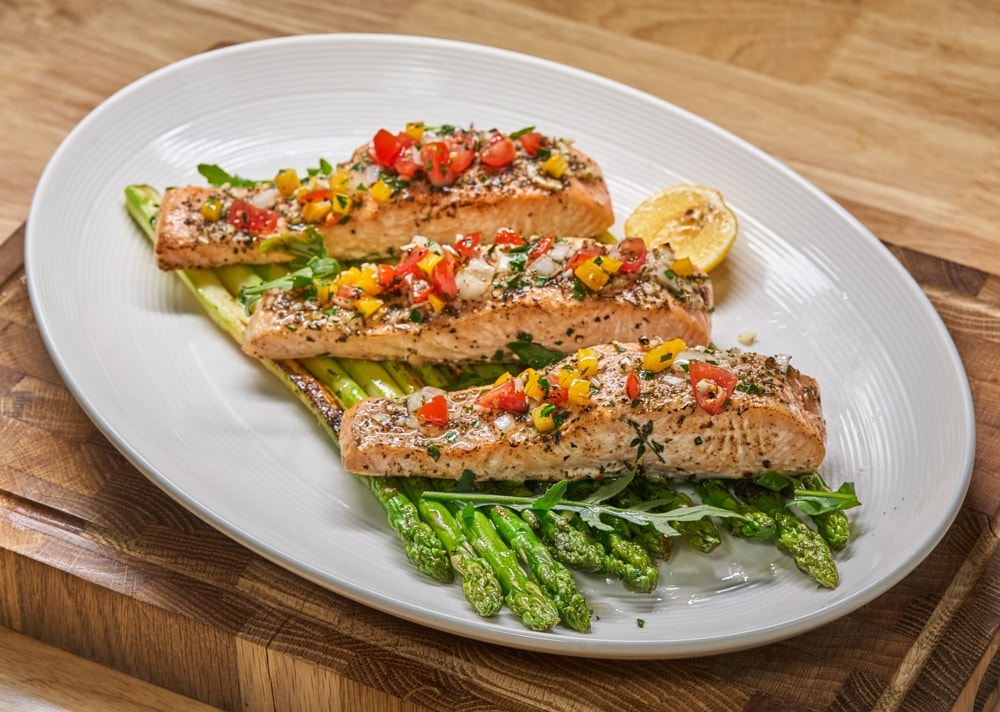
Healthy Baked Salmon
This oven baked salmon recipe is the best, easy, and healthy salmon dish I’ve ever tried! Made with lemon, garlic, and herbs for incredible flavors. Perfect for busy nights and special occasions.
Get the baked salmon recipe
FAQs for cooking salmon
It would be best if you looked to cook salmon at 350°F for around 12 to 15 minutes per inch. Make sure to determine the thickness of the salmon, as thicker salmon will need longer to cook than a thinner slice.
Salmon at 375°F will need around 10 to 12 minutes per inch. Again, ensure that you are very accurate when determining how thick your salmon is to avoid any potential risks of undercooking.
Salmon cooked at a temperature of 400°F will only need a few moments when cooking. This should be around 8 to 10 minutes of cooking time per inch.
Going higher again, salmon cooked at 425°F will need around 6 to 8 minutes for every inch of thickness in the salmon slice.
The highest temperature we recommend, 450°F, should only take 5 to 7 minutes for every inch of thickness. Be very strict about this, and do not overcook, as 450°F can quickly lead to overcooking.


